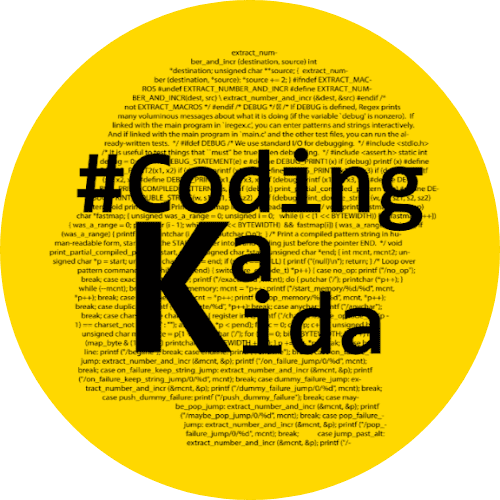How SonarQube and Black Duck Works: SonarQube and Black Duck are both tools used in software development, but they serve different purposes and focus on different aspects of the development process.
let’s understand both in detail:-
SonarQube:
- SonarQube is primarily focused on code quality and code analysis. It helps developers identify and fix bugs, code smells, and security vulnerabilities in their codebase.
- It provides static code analysis, which means it examines the code without executing it. SonarQube checks for issues such as complexity, duplication, coding standards violations, and security vulnerabilities.
- SonarQube offers detailed reports and metrics on code quality, enabling teams to continuously monitor and improve the health of their codebase throughout the development lifecycle.
Read Also: Join in Mongo db
Types of issue detection : How SonarQube and Black Duck Works
SonarQube identifies various types of issues in code through static code analysis. Here are some common issue types that SonarQube detects:
Bugs:
These are issues that can cause incorrect behaviour or unexpected outcomes in the software. Examples include null pointer dereferences, array index out of bounds, and resource leaks.
Vulnerabilities:
These are security-related issues that can be exploited by attackers to compromise the system. Examples include SQL injection, cross-site scripting (XSS), and insecure cryptographic algorithms.
Code Smells:
These are indicators of poor code quality or design that may lead to maintenance difficulties or bugs in the future. Examples include long methods, duplicated code, and excessive complexity.
Code Style Violations:
These are deviations from coding conventions or style guidelines defined for the project. Examples include inconsistent indentation, unused variables, and incorrect naming conventions.
Complexity Issues:
These are related to the complexity of the code, which can make it difficult to understand, maintain, or modify. Examples include high cyclomatic complexity, nested loops, and deeply nested conditional statements.
Performance Bottlenecks:
These are issues that can degrade the performance of the software. Examples include inefficient algorithms, excessive memory usage, and database queries inside loops.
Security Hotspots:
These are areas of the code that may pose security risks and require further investigation. They serve as pointers to potential vulnerabilities that may exist in the codebase.
Deprecated APIs:
These are usages of APIs or libraries that have been deprecated and should be replaced with newer alternatives to ensure compatibility and maintainability.
Read Also: Mastering MongoDB: Unraveling the Power of Aggregation Pipelines and Stages
Black Duck:
- Black Duck, now part of Synopsys, is focused on managing and securing open-source software components used in a project.
- It helps organizations track the open-source components and libraries used in their software projects, ensuring compliance with licensing requirements and identifying any security vulnerabilities associated with those components.
- Black Duck scans the project’s dependencies to identify any known security vulnerabilities or licensing issues. It provides reports on the usage of open-source components and their associated risks.
Types of issue detection : How SonarQube and Black Duck Works
These are some common issue types that Black Duck can detect, helping organizations manage the risks associated with using open-source components in their software projects and ensuring compliance with licensing requirements.
Security Vulnerabilities:
Black Duck scans the project’s dependencies and identifies known security vulnerabilities in the open-source components used. These vulnerabilities may include issues such as remote code execution, SQL injection, cross-site scripting (XSS), and more.
License Compliance Issues:
Black Duck checks the licensing information associated with the open-source components and identifies any license violations or conflicts. This includes issues such as using components with incompatible licenses or failing to comply with license requirements (e.g., not providing proper attribution).
Policy Violations:
Organizations can define custom policies in Black Duck to enforce specific requirements or restrictions on the use of open-source components. Black Duck identifies any violations of these policies and alerts the relevant stakeholders.
Component Risks:
Black Duck provides information on the overall risk associated with each open-source component used in the project. This includes factors such as the severity of known vulnerabilities, the frequency of updates, and other metadata.
Component Versioning Issues:
Black Duck helps track the versions of open-source components used in the project and identifies any outdated or unsupported versions that may contain security vulnerabilities or lack important updates.
Quality and Maintenance Insights:
While Black Duck’s primary focus is on security and licensing issues, it may also provide insights into the quality and maintenance status of open-source components, such as the frequency of updates, community support, and code quality metrics.
Conclusion
In summary, while both SonarQube and Black Duck are valuable tools in software development, SonarQube is focused on code quality and analysis, whereas Black Duck is focused on managing and securing open-source components within a project.
Depending on the needs of a development team, they may use one or both of these tools in their development process.

Hey Tech Enthusiasts!
I’m Avinash, a passionate tech blogger with over 13+ years of experience in the trenches of software engineering.
You could say I’ve worn many hats in my journey – from full-stack developer crafting beautiful and functional applications to Solution Architect, designing the architecture for complex systems.
Over the years, I’ve delved into a vast arsenal of languages and tools, including the Generative AI (LLMs, LLM-Proxy, Observability, Prompt Engineering), .NET family (.NET, .NET Core), PHP, Rust, Python, the JavaScript frameworks (Angular, React, Node.js), and databases like MySQL, SQL Server, MongoDB.
As the cloud revolutionized our world, I’ve become well-versed in both Azure and GCP platforms, wielding Docker for containerization and CI/CD pipelines to streamline development workflows.
Here on my blog, I aim to share the knowledge I’ve accumulated and the lessons I’ve learned along the way. Whether you’re a seasoned developer or just starting your coding adventure, I want to provide you with insightful, practical articles that tackle real-world tech challenges.
Get ready to explore the latest advancements, delve into programming concepts, and discover efficient solutions to your development dilemmas. So, buckle up, tech enthusiasts – let’s embark on this exciting journey together!

